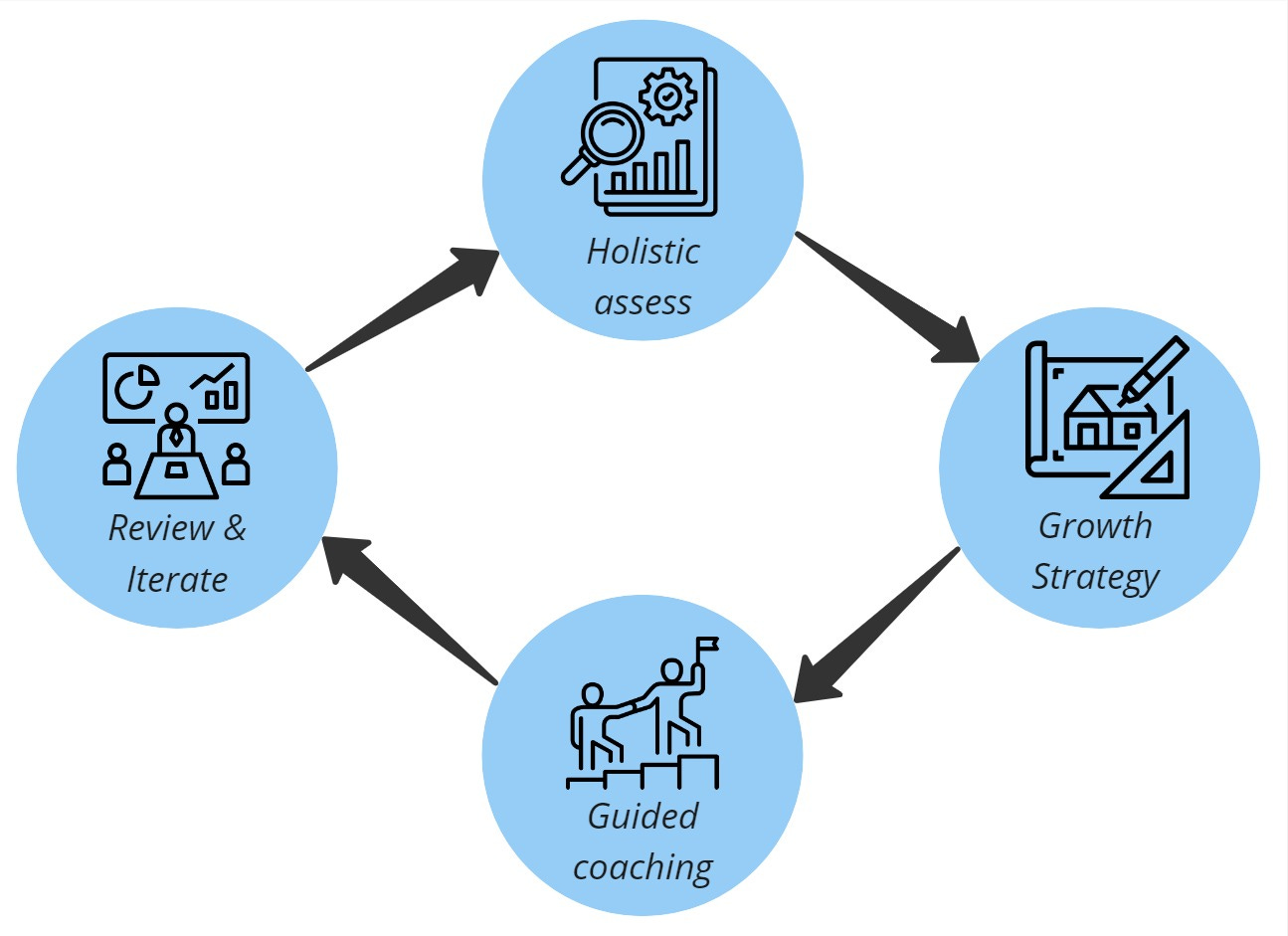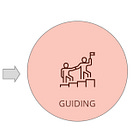The Ultimate Guide to Creating a Culture of High-Impact Product Teams
The Power of Tools and Rituals to Systematize Team Growth
Hey! Nacho here. Welcome to Product Direction’s newsletter.
Next week, I’m hosting a free “5-Day Challenge” to help product leaders create an effective plan to achieve High-Impact Teams In 2024 🏆.
It will combine short videos and 15’ daily activities that will set you apart from how most leaders try to improve their organizations. It starts on Monday. Sign up here!
The bad news
The vast majority of companies are stuck with ways of working that produce mediocre product results.
Features factories, lack of “time” for discovery, constant change of priorities, slow deployment practices, lack of experimentation tooling… I can probably enumerate over 100.
We can complain and find reasons for these impediments. But, as a product leader, it’s your job to change it. No excuses.
The good news
The good news is that most product leaders constantly try to change and improve their organization.
We have consumed plenty of articles, books, and videos about how the best companies work.
We have gone to courses, conferences, and programs where we got training and inspiration.
The reality
Despite investing good time and money, change is not effective. It either doesn’t persist or doesn’t produce any measurable result, causing frustration and ingraining the previous processes.
This shouldn’t be a surprise, though. Product leaders are not trained on how to create effective change in their people and their working models!
Yet, it is a critical skill for their success.
In previous articles and ebooks, I discussed how to assess, decide, and implement a practice change. In the next sections, we will combine everything to make improvements systematically and create a high-impact product culture for your team.
This is part of the High-Impact Product Teams article series:
Systematizing continuous impact improvement - This article
Let’s break down the challenge into 4 foundational steps:
1. Diagnosing: Not Every Change is Good Change
To produce superior results, you need teams that can create a higher impact.
Relying on your “instinct” to decide what needs to change is tempting. But it is usually biased, and we end up chasing framework fads and investing in topics that produce suboptimal results.
We should select differently. This is a prioritization problem: our desired outcome is more impact, and we need a way to evaluate what will be the most valuable change we can introduce next.
This mindset helps us move from isolated practice implementation to continuous product culture improvement.
Like in our product work, we want to:
Holistically see the possible improvement options
Make evidence-based assessments of the potential impact
To understand what a “holistic assessment” can look like, I provided a model and initial questionnaire in the first article of the series.
To explain the importance of evidence in our analysis, I shared the BestDay case study: my assessment, based on what people told me they were doing (or how I understood they were doing it based on their explanations), differed from reality. I realized it only days later when going through actual artifacts and meetings in which we saw the real output of their work (which I now call “evidence” of the processes).
That’s why now I look to collect artifacts and other “outputs” of how people work and base my analysis of practices on those facts.

2. Plan and Design: Tying Change to Impact
I have seen countless failed examples of leaders starting a practice change that fails to stick. Or the transformation theater that begins with another function, like HR, hiring someone promising to “Install the Spotify Model” in their org.
The key to making change effective starts with a good design and plan.
2.1. Focusing on the right priority
As with product work, we need to focus our efforts. To select the top strategic area for improvement, we need to understand that, given our situation, we can choose not any area for improvement because we may end without any impact. For example, adding great discovery interviews to a company that is output-focused and doesn’t measure results is unlikely to improve impact.
To solve that problem, I created a model to help clarify the progression of product practices, highlighting the next step you should take in your practices to unlock the next level of results and impact.
You can read more about it in the following article.
2.2. Design
There is no one-size-fits-all set of practices. As with your product, you will do some discovery and definition for your ways of working before moving to implementation.
A great way to start is creating a small vision, a “working backward” view for your team's improvement.
To validate how the implementation could be more successful, you can run activities like:
Run a session to uncover how something is currently done in detail.
Interviewing team members to see current challenges
Prototype part of your planning and do a prototype interview or an experimental implementation.
The goal is to reduce risk and increase confidence in the success of the improvement.
2.3. Goal and Rollout Plan
In this last phase, we must clarify the success criteria and how to get there.
Most practice improvement efforts are hard to evaluate. The good news is that, given the work we did in the assessment, we now have a baseline. We can describe our goals in terms of the improvement we want to see in future assessments.
This, combined with the vision, gives clear expectations and measures to track.
The final step is breaking down the end goal into intermediate milestones that help us see progress and guide the team through the change process.
I have described this in my last article.
3. Implementing: Guiding Beyond Training
Now it’s time for action. There are two big activities in the implementation phase:
Skill leveling: providing a practice environment to help those who need to develop more skills as part of the practice change.
Coaching: helping each team on a regular cadence to see progress, hold them accountable, and help them solve any challenge that arises in the process.
For a deep dive into this topic, you can check this previous article:
4. Cadence, Evaluation, and Iteration: Make Culture Change Stick
4.1 Measuring results
It is often hard to perceive, evaluate, or communicate the extent and impact of change.
With all the work we did, we have some valuable tools to do it differently:
On the one hand, we want to measure the actual impact on outcomes. We will track teams' results over time and try to see higher achievements in their short-term goals (like OKRs) due to a more mature and higher-impact set of practices.
We will track the uplift in evaluating our practices based on the assessment scores.
We will collect new evidence, based on the implementation of practices, that can provide new insights for future improvement.
Doing just this will set you apart from most improvement efforts.
4.2 Evaluating and sharing
There are two ceremonies I recommend (can be part of the same meeting) that highly improve the change management process:
A before-and-after presentation by teams: each group can present something about how they changed their practice, sharing their past ways of doing things contrasted with the newer version. It is a very tangible way to celebrate progress.
A regular retro on ways of working: the difference from normal retros is that it is centered around the improvements efforts and cross teams, which allows sharing of insights across silos.
Of course, you can go beyond these options, and I strongly encourage sharing beyond the product development organization.
4.3 Cadence and Iteration
We want to make this improvement mindset systematic and persistent. That is why we want to set up a cadence for the cycle (plan, implement, measure, re-assess).
This could change depending on your team’s situation and workload, but I recommend quarterly loops. That enables fast-paced change, focus, and quick feedback loops to course-correct with any new learning.
That’s it!
If these topics resonate, I strongly recommend you join the 5-day challenge. I’ll share more actionable tools and tips, with concrete steps to get you started.





